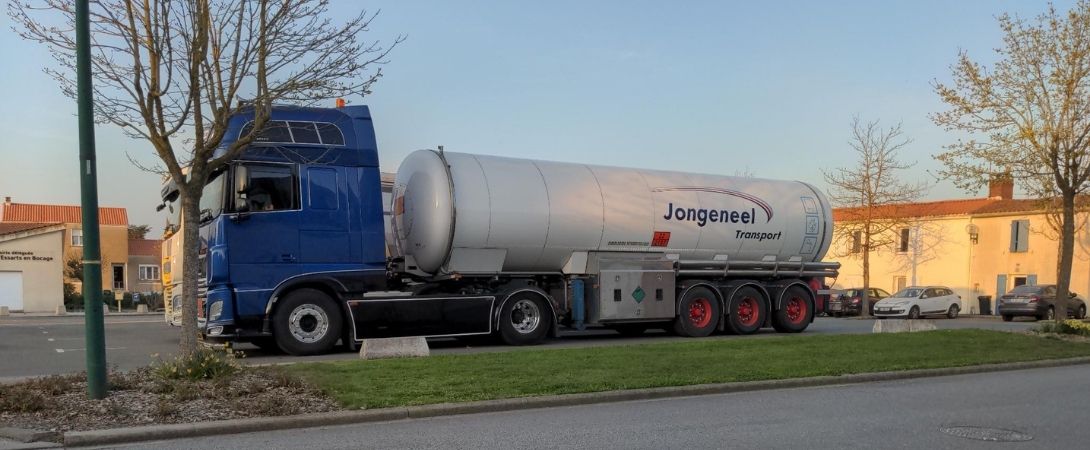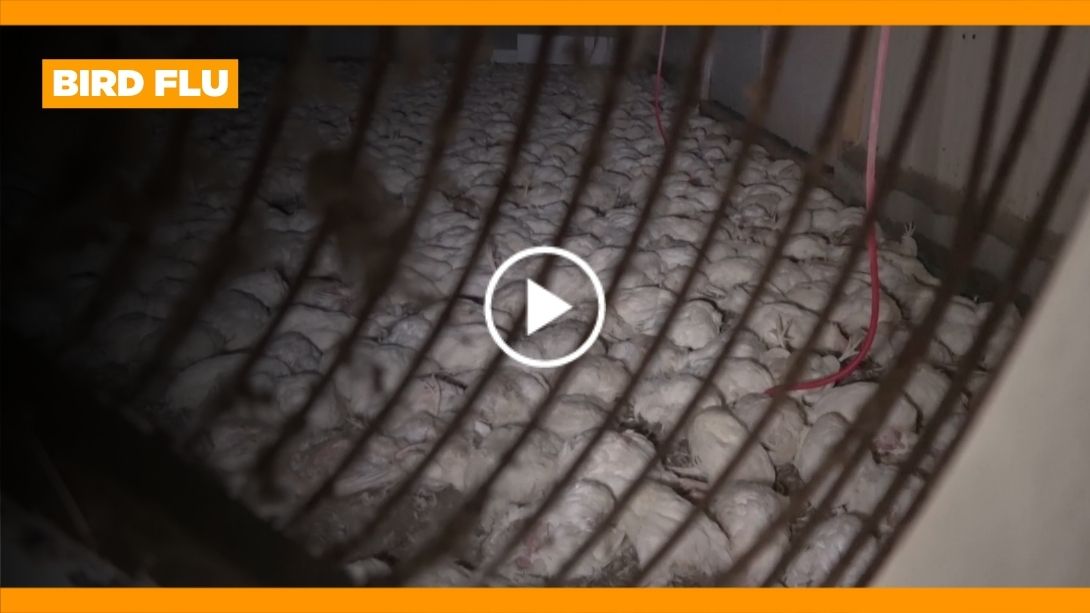Le 05/04/2022
Intensive farming conditions are bolstering the outbreak
The scale of the outbreak of bird flu hitting France is unprecedented, especially in the Pays de la Loire region. Every single one of the chicken, duck and turkey farms were emptied of their animals, the whole flock has been destroyed. However, no picture of this massive culling has been released, until now.
The animal protection NGO L214 releases today some footage recorded last week at Les Landes-Genusson, a French village, in the Vendée County. The footage shows broiler chickens being killed by a Dutch company. The floor of the barn is covered by a mantle of dead birds, and workers are shown picking up tens of thousands of dead bodies, carrying them to telescopic diggers which ultimately throw them in dump trucks.
Free resources
More than 14 million birds already asphyxiated
Famous French writer Victor Hugo said: « Hell does not exist for the animals, they already live there. »
Different methods are used to kill the birds, according to statements collected by L214:
- Death by asphyxia, using carbon dioxide, which is particularly painful for birds: it can be irritating and create convulsions before the unconsciousness. According to a report by ANSES (French National Food Safety Agency), it is already difficult to manage stunning before killing in slaughterhouses, so within a barn it is even worse. A French company, GT Logistics, and a Dutch company, Jongeneel, perform this method, according to our investigation.
- Slow asphyxia is also obtained by switching off the ventilation. The density of animals is so high in intensive farms that only a few hours without ventilation will lead to the death of the whole flock. One farmer said they [farmers] had to « finish them off using a shovel”.

Picture of a truck belonging to Jongeneel, parked in the Vendée County.
The situation in France is out of control
In 2020-2021, an avian flu outbreak swept across 500 farms and 3.5 million birds were culled. Preventive measures were taken in order to avoid such outbreaks in the future. One of the key measures was the seclusion of the flocks. This year’s outbreak sharply underlines the failure of these measures, with a dramatic example in Vendée County: intensive farms are the most impacted ones. As of April 4th, 1164 highly infectious avian influenza infections were recorded in intensive farms, and only 42 among wild birds and 22 in small-scale poultry yards.
The authorities are overwhelmed by the virus: the veterinary services unofficially advise the farmers to switch off the ventilation to kill the animals. Once culled, the dead animals can lay there for days before being collected, and it falls to the farmers to organize together to collect them and to get rid of them. They are asked to bury them in pits dug up next to the farm. For the carcasses which could not be buried, the authorities have set up temporary stocking grounds.
L214 intends to hold the State accountable for the management of this crisis and the serious infringement of the most basic rules of animal protection.
A public health hazard
The French ministry of agriculture wants to be reassuring and stated that “it is safe to eat poultry, eggs, foie gras, or any product of the poultry industry”, but remains silent about the public health hazard linked with the spread of the virus. The Institut Pasteur website provides another story: « Avian influenza is a viral disease that affects birds, with a very high mortality rate in farmed birds such as chickens and geese. Although most avian viruses do not infect humans, some subtypes are able to cross the species barrier, such as the H5N1 virus, which is pathogenic for humans and is found in Asia. The virus can currently only be transmitted from animals to humans, but health authorities fear that it may evolve into a human-to-human transmissible form, paving the way for a pandemic. » In the current situation, the H5N1 subtype prevails at more than 95 %.
The risk is even bolstered because we are currently in the middle of a human flu outbreak. Yet, the Institut Pasteur underlines that a new viral subtype combining both human and avian influenza could appear: « This would occur if a host were co-infected with two different viruses – in this case an avian virus and a virus infecting mammals (humans). Within the same cell, the two viruses would multiply, producing several copies of their genomes. During virus assembly, reassortant viruses that have randomly incorporated segments from the genomes of one or other of their parental viruses are formed. If one of these new viruses were to contain segments of the proteins H5 and N1 that are found in avian influenza, it would fail to be recognized by the human immune system, falling completely under the radar. »
Incidentally, it was recently found that the virus of the Spanish flu of 1918 was actually a combination of the human flu virus and N1 genes coming from avian background.
Farmers and people working to collect the dead birds are in a frontline, and potentially exposed to a serious hazard.
Intensive farming is an aggravating factor of the outbreak
The avian influenza originates in the wild: trying to eliminate it is hard, and killing every migratory bird on Earth is neither an option nor a solution. And it is worth noticing that in Vendée County, not a single avian influenza case was recorded among the wildlife in Vendée.
Seclusion proved inefficient, as well as all the measures supposed to prevent the outbreak. It is clear that the virus can find its way through the ventilation and infect the farms, regardless of any biosecurity measure. Gilles Vallat, CEO of ANSES, explains: « the virus is airborne and got in the facilities through the ventilation system. In facilities used to breed poultry we need a very good ventilation, and the virus could get in by this way. »
Even worse, the intensive farming conditions enhance the spread of the virus: once into the facilities, considering the high density and the very poor genetic diversity of the birds, the virus will spread like wildfire. This way, the viral load will increase dramatically and be blown away through the ventilation towards the next farm. The Vendée County has a large number of factory farms, which creates the best environment for the virus to multiply and create new clusters.
We need to put and end to factory farming
In France, factory farming is largely predominant: 83 % of broilers and 97 % of turkeys are raised in intensive conditions (i.e. in barns, with no outdoor access). Once this historic outbreak is over, going back to business as usual would be insane. Ending factory farming and drastically reducing the numbers of animals we breed is crucial. A large majority of French citizens are opposed to factory farming, but the candidates in the upcoming presidential election are less definite (discover their positions and ranking here).
According to Sebastien Arsac, cofounder of L214: « The cruelty of humans towards animals has reached its climax. The situation is out of control and we’re at a point where we basically cut off the ventilation to let tens of thousands of birds die of slow suffocation. The number of animals culled is so large that we don’t know how to deal with their carcasses. 14 million birds are treated like bulky waste. We must draw the conclusions of this outbreak and drastically reduce factory farms and the number of animals we breed. »
